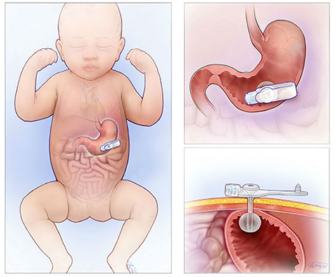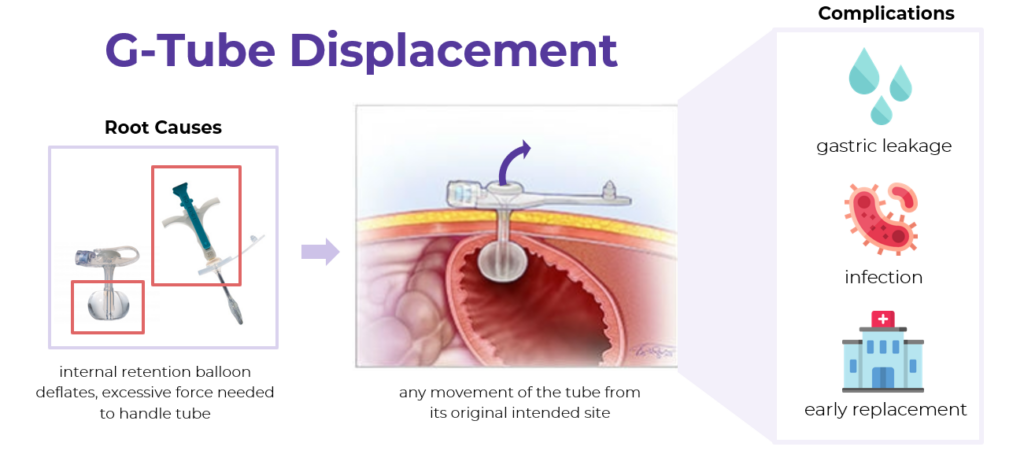The Problem
Children with feeding dysfunction need a reliable method of assisted feeding that reduces the risk of tube displacement and its associated complications.

At any given time, nearly 1.4 million children in the US require feeding assistance. Nearly 117,000 of these children are neonates and infants, or children ages 0-2, who suffer from severe, persistent feeding dyfunction.
There are hundreds of conditions that can hinder a child’s ability to feed properly. This lack of proper nutrition is particularly debilitating for neonates and infants, who are in their most critical stage of growth.
For these children, gastrostomy tubes (G-tubes) are the gold standard for feeding assistance. These tubes allow for direct feeding into the stomach.

Nearly 22% of G-tubes displace within 3 months of placement in neonates and infants. This displacement, ranging from partial shifting of the tube to complete dislodgement from the gastric tract, can lead to severe complications such as leakage, infection, and the need for early replacement.
These complications, which can result in drastic impairments later in life, mean that children with feeding tubes often have to return to the hospital for emergency care or replacement procedures. Not only is this highly disruptive to the child’s daily life, but it also places a time and cost burden on parents and caretakers.
Our mission is to improve current pediatric assisted feeding.
We aim to reduce tube displacement and its complications to provide a higher standard of care and better quality of life for patients, parents, and providers alike.
